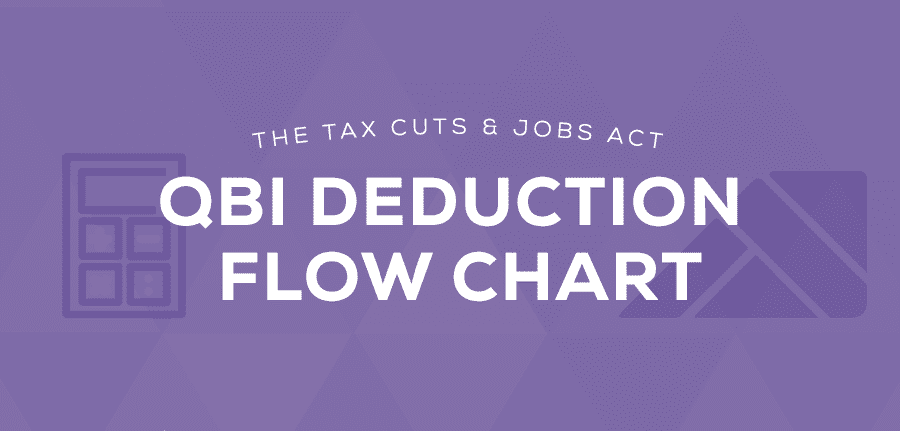

A new deduction introduced by the Tax Cuts and Jobs Act of 2017 is the Qualified Business Income (QBI) Deduction, one of the biggest changes for pass-through entities under tax reform. This is a new deduction for owners of partnerships, LLCs, S-Corporations and sole proprietorships. It is intended to correlate to the reduced tax rate that corporations now enjoy. However, this new deduction is calculated at the individual level, not the entity level.
Click here to view the updated information and flow chart for tax year 2019.
If your joint taxable income is under $315,000, you can take the full QBI deduction. If your joint taxable income is over $415,000, your deduction depends upon the wages paid by your business or the assets owned by the business. If you fall between the $315,000 and $415,000, the deduction is between the full amount and the limited amount based upon wages and/or assets.
Notice that the trigger is taxable income. This means the amount after you deduct your pension and profit sharing contributions, half of your self-employment tax, self-employed medical insurance, and your deductions, whether they be itemized or the standard amount. Of course, when final guidance and regulations come out, any of these details could be changed.
Further Reading: 3 Things to Know About Being a Pass-Through Entity Owner
Some industries are excluded based upon what they do. These are called specified service businesses.
Owners of these types of businesses may still take the full QBI deduction if their taxable income is below the lower threshold ($315,000 for joint filers), but they get no deduction at all if their taxable income is above the upper threshold ($415,000 for joint filers), regardless of the wages paid or the assets owned. The deduction is phased out ratably if taxable income is between the lower and upper thresholds.
[Update] The below chart is for tax year 2018. Click here to view the updated information and flow chart for tax year 2019.
Note: The flowchart is best viewed on a desktop monitor, but you can click on the image on your phone for a version that fits your mobile device screen.
The QBI formula is clearly complicated and no two taxpayers will be affected in exactly the same way. Depending upon the types of income and deductions you have, the size of your family, the state you live in, and the types of investments you have, even two partners with similar K-1 amounts could have drastically different tax returns.
We highly encourage you to consult with your personal tax advisor to determine the correct treatment for your individual tax situation. Contact Alloy Silverstein for assistance.
As of August 2018, the IRS finally began releasing guidance on Section 199-A and the QBI Deduction.
Contributing Authors:
Associate Partner · Ren III provides tax, accounting, and advisory services to a broad range of clients, with a specialty for manufacturers, title insurance companies, and professional service providers.
View Ren III’s Bio → Follow @R3CPA on Twitter →
Associate Partner · Julie has over 20 years of experience in public and private accounting, representing varied clientele including the medical, legal, and real estate industries and trusts.
View Julie’s Bio →
Empowering business owners and individuals in South Jersey and Philadelphia to feel confident through proactive accounting and advisory solutions.